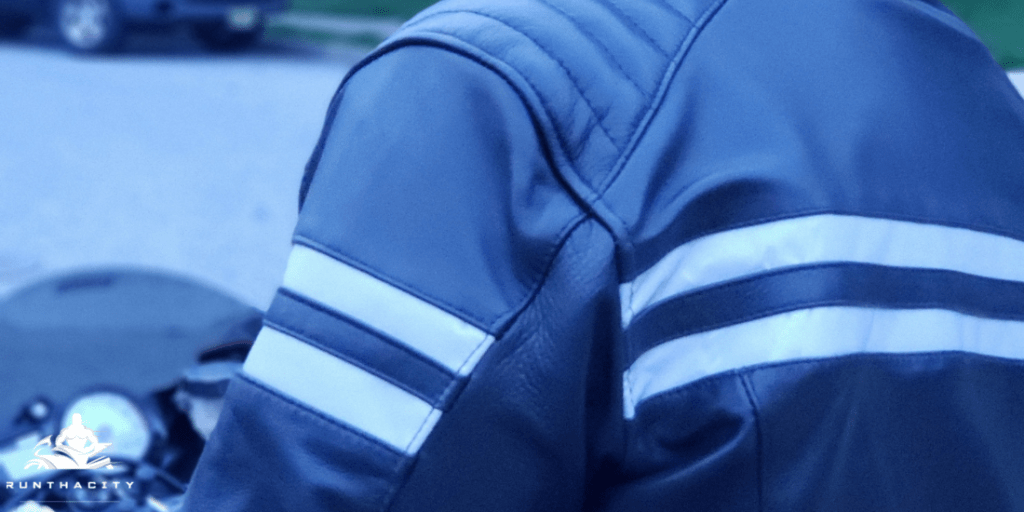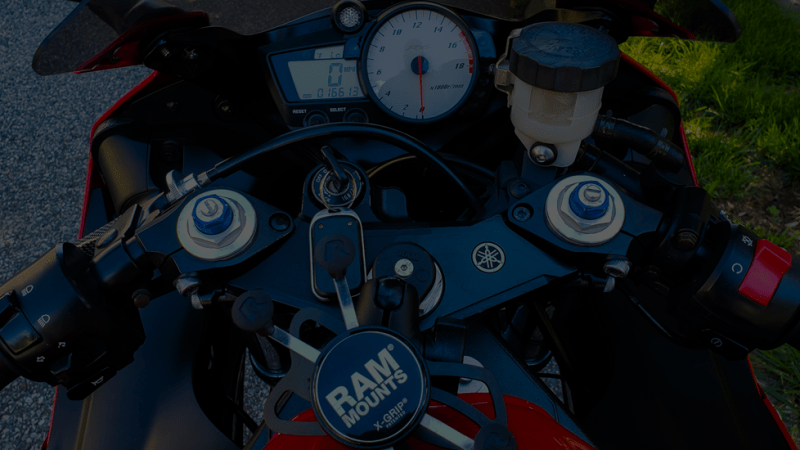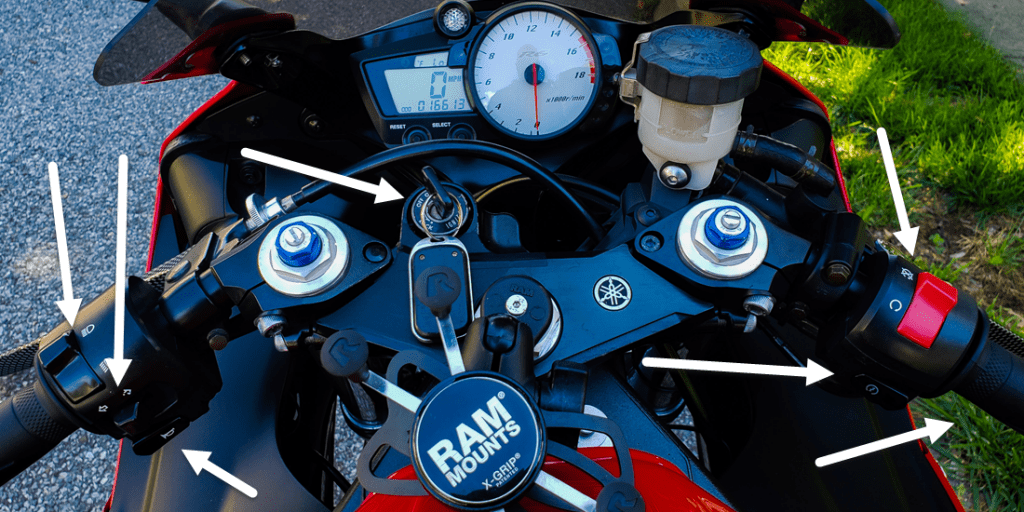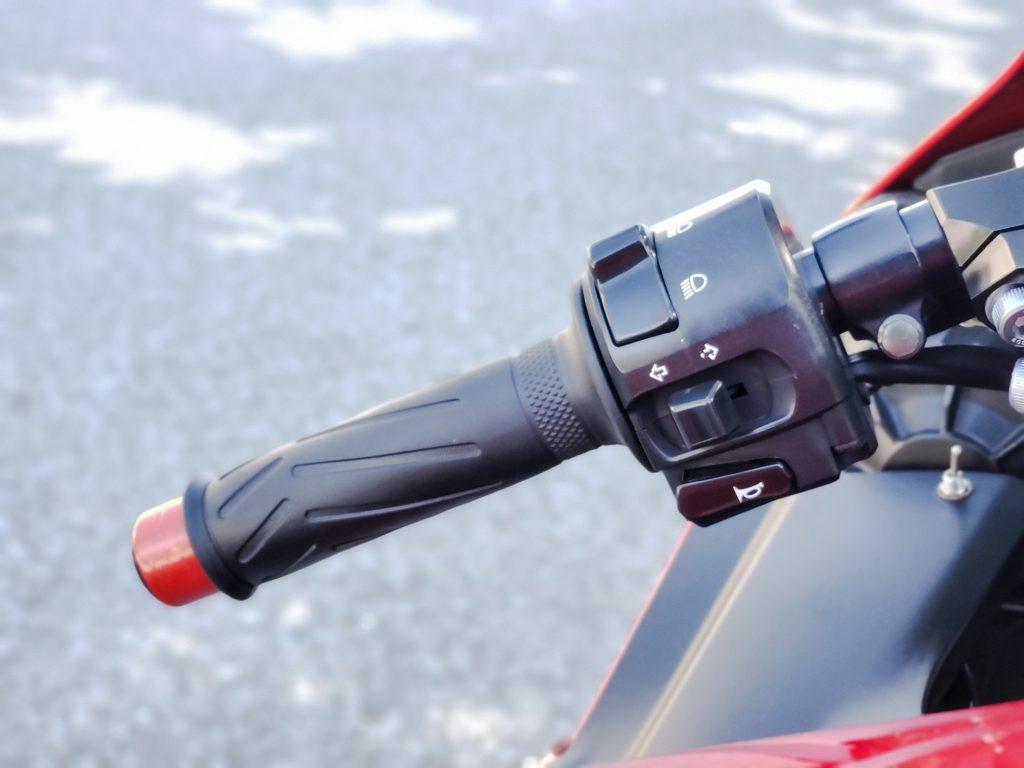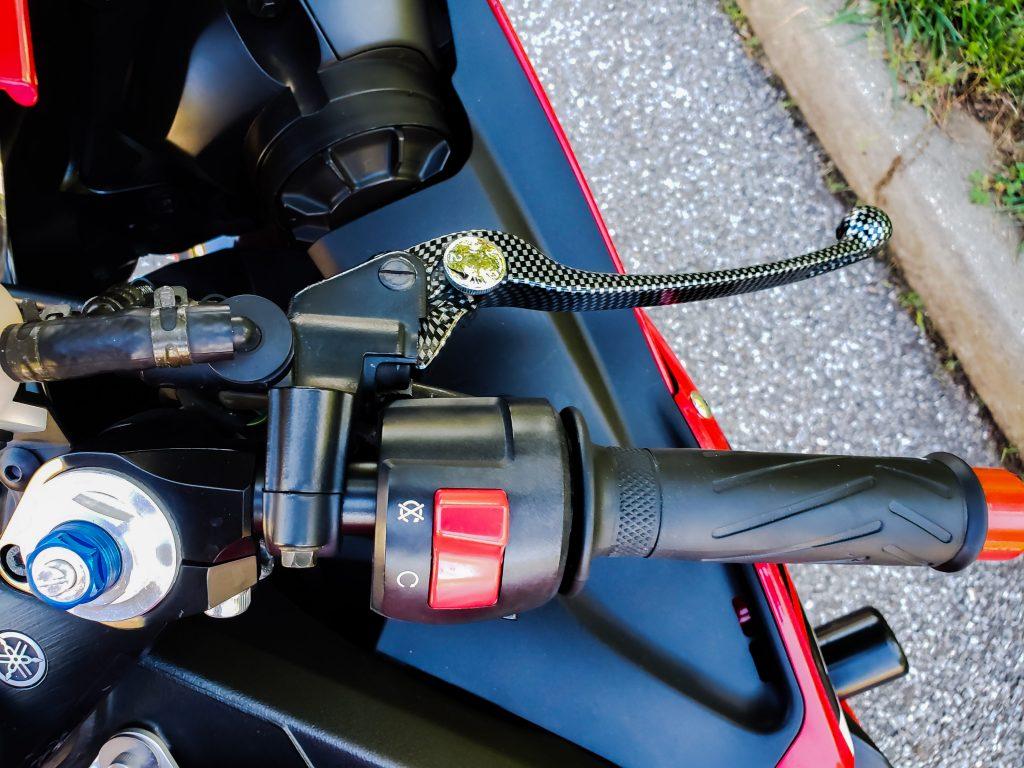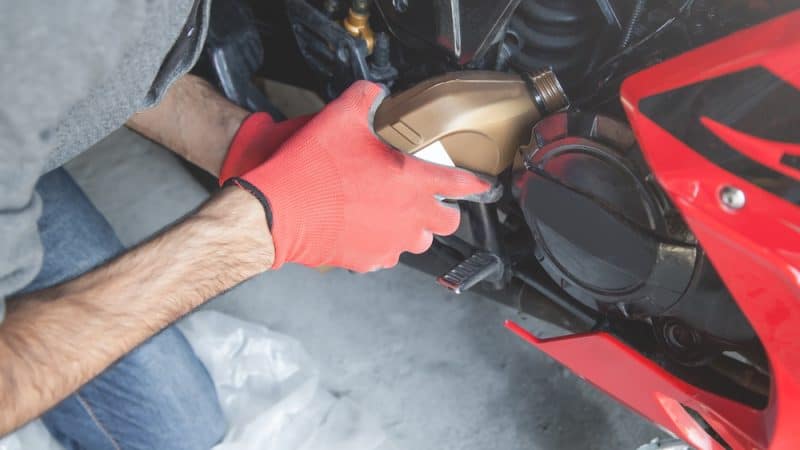Viking Moto Motorcycle Backpack Review
Let’s all agree that the biggest problem with our bikes being daily transportation is the lack of hauling capacity.
So, just as in our scholastic days, backpacks to the rescue! But not just any backpack will do. We’re out in the elements, we’re hauling heavier stuff than a few books, and of course, we don’t want to look like a vagabond. That’s where awesome designs like the Viking Bag’s Motorcycle Backpack shine.
This isn’t your high school backpack, oh no. This Cordura backpack features a modern classic look with leather trim and an understated aesthetic that will match your jacket and your bike, no matter what type of bike you like to ride.
Let’s take a closer look at this awesome bag, and how it can make your daily rides so much cooler.
Shot and Edited by Shaun Maddox
https://shaunmaddox.com/
https://www.instagram.com/shaunmaddox/
Construction
As I said, this backpack is made of Cordura, a modern marvel of material sciences that fits comfortably on your body, while not being a floppy, frail backpack. With dimensions of 18.5”x12.5”x5”, you can carry groceries, personal items, or personal items with ease and comfort no other bag can offer.
Need more organization, or to haul some electronics with you? Well, Viking’s completely onboard with 21st-century life, including a laptop sleeve and stretchy, sewn in pockets for organizing your styluses, connection cords, your phone, and anything else delicate and vital you may need to carry.
That’s not even the coolest thing this bag can do. We all know how important our helmet is for safety, but when we get off our bike, it becomes a cumbersome nuisance to carry around or somehow safely secure to our bike. With this Viking bag, that’s not an issue, thanks to the stretchy helmet lining which can hold pretty much any helmet of any size no problem.
Gone are any excuses, whatsoever, to forego your helmet. You know who you are!
The Feel
I took one of these out for a day ride, that is about 6 hours round trip, to go shopping in another area (I usually wouldn’t, but it’s a good field test for gear like this). By the time I reached my destination, I almost forgot this bag was even attached to me, and that was with a heavy laptop and backup battery in my bag.
I did, however, notice that as I took the bag off when going into a restaurant, that my shirt was a bit damp, as I’d sweat from where it blocked air flow to an extent. However, having had other bags leave the back of my shirt completely soaked through, I’d call this a considerable improvement in that department. Given this bag is weatherized, it kind of can’t have the airflow of something mesh, and I’d rather sweat a tiny bit while having my stuff protected from the elements.
What really caught my attention was the lack of soreness or discomfort across my shoulders, neck and upper back. I’m a broad-shouldered fellow, which means most backpacks with any weight, tend to tug on muscles and leave me sore or even numb – the broad design of the straps both across the shoulders and waist, didn’t cause that problem at all.
Pros and Cons
Pros
- This is an attractive bag that doesn’t scream “hobo” or “kid”, with a professional yet casual aesthetic that matches any jacket well enough.
- It’s weatherized, and will protect everything with gusto.
- It’s very comfortable, and the strap designs don’t cause soreness, discomfort or circulation problems.
- I can carry my electronics in an organized fashion – this modern thinking is lost on a lot of biking gear companies.
- The helmet lining does the biking community two great services by making our helmets no longer a nuisance, and eliminating any excuses for anyone to foolishly leave their helmets behind.
Cons
- Being weatherized, you will sweat a little bit, it can’t be helped.
- While attractive, the black may not be everyone’s taste.
- I know a few hefty guys who might find the fit of this bag, adjustable as it is, to be a bit precarious.
ADDITIONAL DETAILS
- Heavy duty Cardura Construction.
- Reflective piping for additional night time visibility.
- Built in helmet hood.
- Fits most 15″ laptops in padded compartment.
- Detailed organizer for your keys, wallet and other small items.
- Protective eyewear pocket.
- Duraflex® buckles throughout for added strength.
- Audio Ready.
- Height and width adjustable sternum strap.
- Aerodynamic molded body.
Conclusion
I like this bag. It’s not perfect, and I can see some room for improvement in variety of color schemes as well as a bit more adjustability in the straps for bigger people. I’d also like to see another model that’s stretchier, for if I have more stuff to haul back.
Nonetheless, this is a nice bag, and if you ride your bike for daily things like I do in decent weather, you owe it to yourself to give a bag like this a try!
You Might also like
-
Viking Cycle Bloodaxe Leather Motorcycle Jacket Review
When it comes to motorcycle jackets, you want something that balances the need to look like you own the road and enough protection to keep you from becoming part of the road. Viking Cycle, a brand based out of California, has been turning heads with their attention to detail and security in their full range of motorcycle clothing for men and women. The best part is the price tag.
“As an Amazon Associate I earn from qualifying purchases.”Overview of the Bloodaxe Motorcycle Jacket
Out of the box, the Bloodaxe looks awesome and feels awesome. When the jacket first goes on, you’ll notice it’s a bit stiff—but it does loosen up with some wear, as good leather should. The zippers have solid construction, open and close smoothly, and lay well when you’re riding.
The biggest advantage of the Viking Cycle Bloodaxe isn’t the awesome name but the amount of storage. You won’t believe the amount of storage space you have with this jacket. There’s so much, it’s almost ridiculous.
There is a headphone wire system that you can feed into the collar of the jacket, earphone pockets, a media player pocket, cellphone pocket with 3 second access, 2 knife and pen pockets, an eyeglass pocket, a pocket designed to find a 10-inch tablet, extendable keyholder, and another pocket that can fit travel documents and your wallet. The pockets have a unique “no bulge” design, so even if you somehow managed to stuff every single compartment this jacket has, it will still look flat and sleek and not like a bubble jacket. Overall, it sits nice on the body and doesn’t feel stifling.
The sizing does run a little small. Someone around 5 foot, 10 inches, 180 pounds will fall into the M-L range, depending on how much you want to bundle up. If you take out the thermal lining or don’t want to wear a lot of clothing underneath, you might want to size down to prevent the jacket from floating on you.
“As an Amazon Associate I earn from qualifying purchases.”No products found.
No products found.
Specifications
(listed adapted from vikingcycle.com)
- Construction – Drum-dyed soft genuine cowhide leather (milled buffalo), padded shoulders, and Viking cycle level 1 removable “armor” on elbows and spine; two intake vents on the top of the shoulders and exhaust vents in the back
- External Storage – 2 zippered chest pockets, 2 zippered side pockets, and a single sleeve pocket
- Internal Storage – 2 secured zippered pockets and a secret compartment
- Adjustability – waist snaps and sleeve zippers
- Visibility – High viz stripes located on the back and shoulders
Pros
- Sag and wrinkle resistant
- Wind and water resistant
- Abrasion resistant
- A ton of hidden pockets on the internal side of the jacket
- CE marked armor in the back and shoulders – comfortable and stays in place while riding around
- Budget-friendly cost without a lack of quality and safety
- Stylish design
Cons
- Can be hot – the jacket has a thermal lining and is heavy, so it can be oppressive in the summertime even with the vents open. For that reason, it might not be ideal for moving in slower paced traffic;
- CE armor level could be higher.
Warranty Info
Viking Cycle offers a 1 year manufacturer’s warranty on all of their products. This means that any defects or imperfections that you find are covered. The warranty does not cover wear and tear or damages caused from improper care.
This might raise some questions about durability, since some production errors or faults can take a few days or weeks to appear.
If you start to notice something odd going on with the jacket that you didn’t cause, you can contact Viking Cycle at info@vikingcycle.com with the order number and a photo of the defect to get an exchange or refund.
No products found.
Conclusion
Honestly, for the quality of the jacket, you would expect to pay more for it than you do. The name might be a bit for metal than what this motorcycle jacket offers, but the sleekness of the design, paired with the sound construction and unheard of amount of storage makes it a clear winner. If you’re looking for a balance of style and safety without breaking your bank, I recommend the Viking Bloodaxe motorcycle jacket for your wardrobe.
Looking for more details about choosing motorcycle jackets and other riding gear? Then check out and subscribe to my YouTube channel today!
No products found.
No products found.
-
Motorcycle Basics: Before You Start Riding
Before even hopping on a motorcycle, it’s a smart decision to ride about the mechanics of the machine and familiarize yourself with key concepts. Having an idea in your head is going to come in handy when you’re faced with common beginner problems or later on when you’re on the road.
That’s how you really get a handle on the motorcycle. Let’s get started.Motorcycle Basic Controls
Most motorcycles have the same controls; but you should always check the owner’s manual since the locations and shapes of some features will vary between makes and models.
motorcycle controls indicators and equipment Motorcycle basic parts:
Handlebars
Right side:
- Electric start button – usually yellow or white.
- Engine cut-off switch – above the electric start button. Usually red.
- Above the right throttle is the front brake lever.
Left side:
- Horn
- Indicators (blinkers)
- Choke
- Headlight dip switch (high beams/low)
- Clutch lever.
Between the handlebars, you find the ignition key. Ahead of the handlebars, you will also see the speedometer, odometer, and the tachometer.
motorcycle handlebar controls motorcycle throttle Older Styles and Off-Road Bikes
Here’s some special considerations if you are on an older model or have an off-road bike:
Fuel petcock – these are usually attached to the left near the carburetor. You can lean down to switch the gas tank when the fuel is getting low and you need to get to the gas station ASAP.Kick starter – off-road bikes have kick starters more commonly than street bikes. The kick starter works when you push down on the lever, turning the engine crank and causing the pistons to put pressure against the spark plug. Fuel ignites to start the engine.
What To Check Before Your Ride Every Time
Professional schools throughout the country use the acronym T-CLOCs to help you remember what you should check before heading on your bike. These checks should be done at least once a year, depending on how often you are riding your bike. If you ride every single day, you will have to use T-CLOCs much more often.
- T – Tires
- C – (Main) Controls
- L – Lights & other controls
- O – Oil & other fluids
- C – Chassis
- S – Stands
Tires
Check the air pressure and look at the condition of the tires. Are they worn down? Cracking? What is the condition of the spokes? Do you note any air leakage?
Next, look at the rims, bearings, seals, and casts. Does each brake work as it should? Does the bike fight you when turning or slowing down?
Controls
The main controls include the handlebars, cables, hoses, levels, pedals, and throttle. Make sure the condition of the hoses is good and that everything is properly lubricated. The bars should be straight, and the throttle should move without resistance. Ensure the hoses aren’t cut or leaking. Any bulges, chafing, cracks or fraying of control cables needs to be repaired.
Lights & Other Controls
This includes the battery, wiring, tail and signal lights, switches, blinkers, headlight, and reflectors. Is everything illuminating? Do the blinkers flash right? Is fraying or kinks in the wiring? Are the beams strong enough in the dark?
Oil & Other Fluids
Check the gaskets and seals for any leaks. Ensure the oil level is good, along with other fluid levels. Check for sediment in the coolant reservoir.
Chassis
The chassis is made up of the frame, suspension, chains, belts, and fasteners. Nothing should rattle. Nothing should be frayed, cracking, peeling, or chipping. Ensure that everything is tight and that there is tension in the belts and chains.
Stands
Check for cracks or bends in the stands. Springs should hold their position without looseness.
Basic Mechanics of a Motorcycle
Being that a motorcycle rides on two wheels, it is designed to lean to either side. Through balance and input from the ride, the motorcycle maintains an upright position. Many beginners are afraid that the bike is going to fall over if they lean too far, but that’s not the case. Through the forces of physics, such as friction, momentum, and gravity, it’s nearly impossible for a bike that’s going to straight to fall over.
Engine
Another reason the motorcycle stays upright is the force of the pistons in the engine. These pistons move up and down, creating a force that helps the moving bike maintain it’s upward position.
Tires
The tires of motorcycles are designed to be rounded, ensuring that as the bike rounds a corner, the same surface area of the tire remains on the ground.
Chassis
For the beginner, all you need to know about the chassis is how to sit properly. When positioned properly on the bike, your wrists, knees, and back will be comfortable. You should also be able to engage your core and thigh muscles when using your body to maneuver.
Clutch
Most bikes are manual transmission. The clutch keeps the bike moving but also controls the speed by using friction. Clutches are usually bathed in the same oiled the engine uses, so if you ride the clutch for a while, you won’t cause damage. However, some bikes are different, so refer to the owner’s manual.
Wrapping It Up
For the new rider, your focus should be memorizing where the controls are and what certain parts of the bike do. By learning the general location, you can drive much more safely (and not while staring at the handlebars).
Remember, the everything takes practice. In the same way you learned to ride a bicycle, you need some patience with riding a motorcycle. With that, you’re ready to begin!
Liked this article? Want more beginner’s tips? Subscribe to my YouTube channel to get notifications about the latest videos and never miss out.
-
How Often Do I Need To Change Motorcycle Engine Oil?
Changing engine oil is essential to maintaining the life of your beloved motorcycle. If you don’t consistently check the oil level and change the oil when it gets old or dirty, the lifespan of the motor is severely shortened.
Let’s get started.How Often You Need To Change Motorcycle Oil
Most riders will ask the question, “How often do I need to change the motorcycle engine oil?” at least once. The answer depends on the make/model of your bike (we’ll be discussed a Yamaha YZF-R6), the type of oil you used, and how often you ride.
If you used a mineral-based engine oil (the simplest, cheapest kind), then you should change the engine every 2,000 miles if you’re riding frequently. If you don’t ride regularly, you can change your oil at least twice a year.
When using a semi-synthetic engine oil, change the oil once every 5,000-6,000 miles.
Lastly, if you use a fully-synthetic engine oil, change the oil after 7,000-10,000 miles.
Semi- and fully-synthetic motor oils are more expensive than mineral-based engine oil, but the plus side is that they last much longer. The only time when you might have to change before the recommended mileage, regardless of the motor oil type, is if you are riding your bike every single day or you commute a great distance frequently.Yamaha YZF-R6 Oil Change Instructions
You can find the following information in the owner’s manual of your Yamaha YZF-R6. If you don’t have this specific Yamaha model, it’s recommended you find the specific instructions for your make and model, as the steps could be different.
- Checking the engine oil level:
- Put the motorcycle on a level surface and hold it in an upright position, as straight as possible. Slight tilts could result in a false read.
- Start the engine. Let the oil warm up for several minutes.
- Turn the motorcycle off again.
- Wait for the oil to settle. This may take a few minutes.
- Remove the engine oil dipstick. Wipe it clean with a cloth then insert the stick back into the fuel reservoir. Take a moment to look at the maximum and minimum oil level lines before testing if you’re not familiar with it. Don’t screw the stick in. Remove it again to get your reading.
- If the engine oil level is at or below the minimum level, remove the engine filler cap and add a sufficient amount of oil to get the level to the recommended spot.
- Insert then tighten the engine oil dipstick. Afterwards, install and tighten the oil filler cap.
During this stage of your oil check, you might find that you need to change the oil completely.
How To Tell If You Need An Oil Change
The normal color of oil is transparent, brownish, maybe even slightly black. When oil is “clean,” it works best for protecting and keeping the engine clean.
Now, “dirty” oil is when the water consistency is lost. It feels slightly gritty when rubbed between your fingers. The color will be darker, if not completely black, and it will have lost it’s transparency.
You might also notice that the engine is making bizarre noises when the oil is dirty. All these signs point to needing an oil change.
How to change engine oil on a Yamaha YZF-R6:
- Put the motorcycle on a level surface.
- Removing the cowling.
- Start the engine for several minutes. Once warmed, turn the bike off.
- Place an oil pan under the engine to collect used oil.
- Remove the engine oil filler cap, the engine oil drain bolt, and lastly the gasket to drain the oil from the crankcase.
- Once the oil is drained completely, replace the gasket and bolt, fill the tank to the recommended level, and then replace the engine oil filler cap.
When To Change The Oil Filter
Change the filter every time you change the oil or once every 2,000 to 3,000 miles if you’re using synthetic motor oil. You don’t want to ride around with a dirty, old oil filter because it traps any dirt, dust, debris, metal, and sludge that would otherwise harm your engine.
Not a frequent rider? Again, change your oil at least twice a year and pair that with a filter change.Conclusion
To wrap everything up, frequent riders will need to change their oil more often than those who ride once in a while. The quality of the motor oil changes the mileage for oil changes, and synthetic oils will have the longest life. Make sure to check the oil level and consistency often so you can protect the engine and preserve the life of your ride.
Enjoyed this information and want more? Head over to my YouTube channel. Subscribe and receive notifications for every update.




